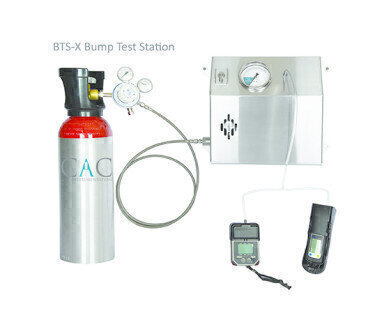Gas Detection
The Effect of Poisons and Inhibitors on Catalytic Combustible Gas Sensors (Pellistors)
Jun 05 2020
Catalytic combustible gas sensors are susceptible to poisoning and inhibiting by several different compounds which can result in irreversible poisoning or reduce the sensitivity of the sensor to measure and respond to different gases. The nature of the poison could be physical, soot or other bi-products of combustion, which block the pores in the bead or chemical with molecules forming strong bonds with the catalyst and reducing activity.
CAC GAS & Instrumentation offer expert tips and advice on best practices in gas detection, process gas analysis, environmental gas measurement and laboratory gas analysis. They are very familiar with problems such as sensor failure due to poisoning or inhibitors. CAC serve clients across the globe and solve many recurring problems that gas detection operators encounter in the multitude of markets catered for the world-renowned specialists in gas solutions.
According to the specialists at CAC, poisons such as silicon, lead, sulphur or phosphorus-based compounds can result in immediate sensor failure. The most common chemicals that can poison catalytic sensors are those containing silicon, such as common oil, and lubricants and silicone compounds used in machinery. The simple act of cleaning your instrument with a silicon based cleaning product or hand cleaner can kill the sensor.
Inhibitors such as sulphur compounds, halogenated hydrocarbons and chlorinated compounds reduce sensor response. Compounds and chemicals used in common fire extinguishers and Freon used in refrigeration can cause the sensor to malfunction. Inhibitors slow the sensor response and, in some cases, reduce the sensor’s ability to measure some gases. This becomes readily apparent when instruments experiencing inhibitors cannot measure methane but can measure pentane. High concentrations of flammable/combustible gases (above the LEL) can have a poisoning effect, due to the build-up of carbon soot. Molecules with high carbon content such as aromatic compounds can be a concern.
If you suspect you have any poison or inhibitor in your working environment where your gas detection device is used then you must put into action testing procedures to make sure your instruments are working correctly.
Bump testing or bump/response testing the instrument prior to use is necessary as some airborne containments may inhibit or poison the catalyst, making the sensor incapable of measuring gas. Methane should be used to bump test the combustible gas sensor even if other gases are used to calibrate as because methane is difficult to burn and will show the signs of the sensor malfunction before other test gases. A bump test, in these circumstances, would allow a low concentration of flammable gas to flow across the sensor. If the audible and visual alarms are activated this would indicate that the sensor is ‘seeing gas’. The procedure is simple to perform; it only requires a cylinder of gas and a regulator and it can be performed by field operators. If the instrument fails the bump test it should be placed out of service and sent for repair/calibration.
Calibration should follow your schedule provided you are bump testing prior to use. Technicians should test instruments first before calibrating and record all sensor response data. This will indicate if the sensor is losing response between calibration periods and allow you to determine if the calibration period should be shortened or lengthened. Bump testing and calibration is always important but particularly critical when inhibitors or poisons are present.
CAC GAS & Instrumentation’s website offers many more expert tips and advice on best practices in gas detection, process gas analysis, environmental gas measurement and laboratory gas analysis.
Digital Edition
IET 34.2 March 2024
April 2024
Gas Detection - Biogas batch fermentation system for laboratory use with automatic gas analysis in real time Water/Wastewater - Upcycling sensors for sustainable nature management - Prist...
View all digital editions
Events
Apr 30 2024 Melbourne, Australia
Apr 30 2024 Birmingham, UK
May 03 2024 Seoul, South Korea
May 05 2024 Seville, Spain
May 06 2024 Minneapolis, MN, USA


















